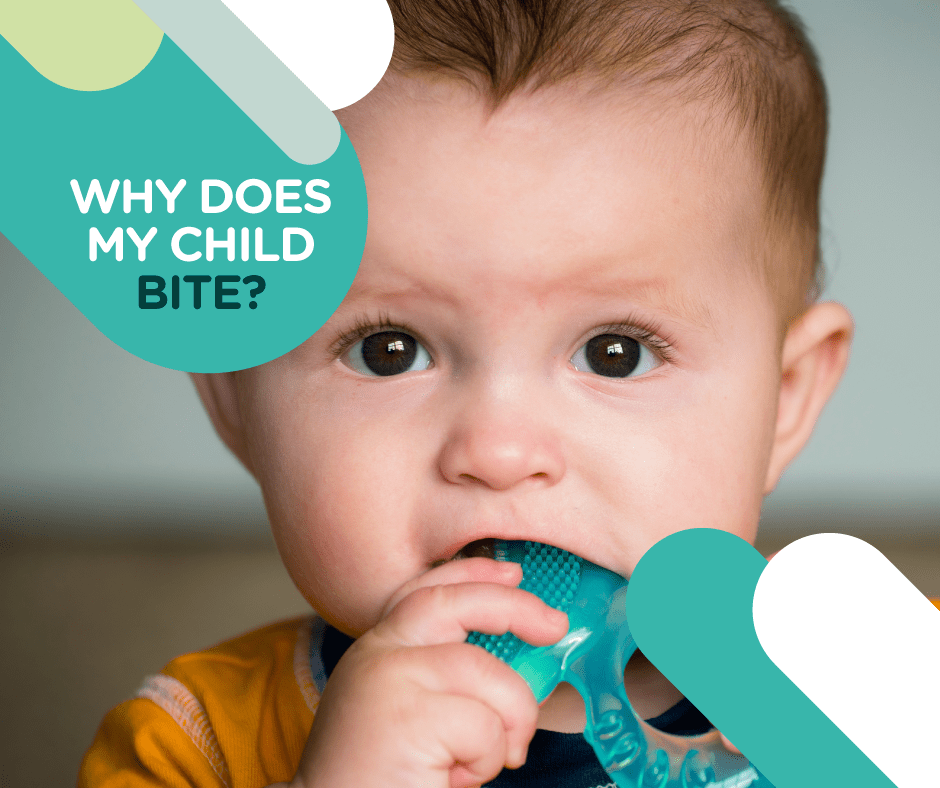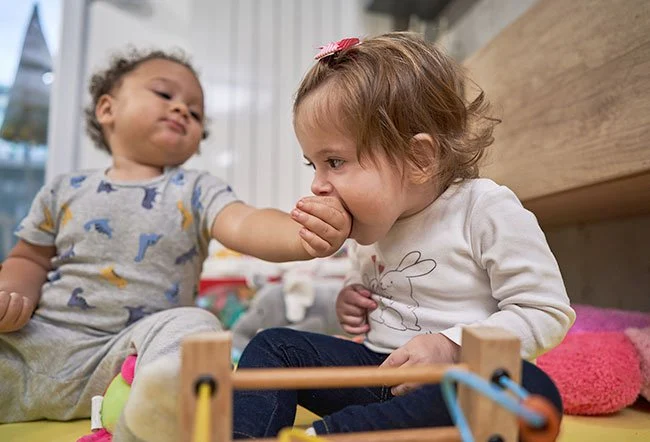How To Stop Your Child From Biting?

As toddlers grow, they pick up different behavior’s. Though some behavior’s like biting their ice cream or running behind your dog may seem adorable, biting is not a very cute behaviour. They may resort to biting as a way of communicating or venting their emotions. Young children may bite to express anger, fear, attention, or need for attention. Parents need to correct this behaviour in their children immediately. They should teach their young ones that biting others to serve these needs is not okay and that they need to express themselves in other ways.
Why do children bite?
Children bite for several reasons. Though most of it is not intentional, it is not acceptable.
- Usually, children between the age of 1-2 tend to bite when they are teething. They bite or chew onto anything to give them a soothing effect or get rid of the irritation in their gums.
- Children below the age of 3 explore their surroundings by putting anything they grab into their mouths. At this age, when they hold any toy or food, it is likely to end up in their mouth.
- In children above the age of 3, biting is one of several behavior’s they pick up to get attention. When they feel ignored or lonely, they tend to bite to get noticed.
- Some children fail to express their feeling effectively. When a child is unable to express emotions like anger or frustration, he vents it out by biting someone.

Here are some ways to stop your child from biting-
- When you see your child biting someone, parents should make sure to respond immediately. Remove your child from the situation entirely. Young children have short attention spans. Therefore, if you don’t address their behaviour quickly, they will continue this behaviour. Tell her that he needs to calm down and does not want you to hurt anyone.
- Do not yell or scream at your child as it unintentionally reinforces this behaviour. Try to approach him in a calm way to remind him that biting is not allowed. Try not to overexplain as your child may feel overwhelmed. Keep your response short and specify where they misbehaved. You could keep it short by saying, “I know you are angry, but biting is not okay. Biting hurts.”
- Once the situation has calmed down, acknowledge your child. Ask him what he wanted and what he could have done to get what he wanted instead of biting. As soon as your child is old enough, encourage him to use words like “no” or “stop” instead of biting. Use a calming voice so that your child listens to you and understands your point of view. You could say, “I know you were upset, but I cannot help you when you bite, kick, or cry. I will be able to help you only if you use your words.”
- You cannot develop your child’s verbal skills overnight. But it is crucial to teach your child how to express themselves physically without hurting others. Tell your child that they can blow off the steam by stomping their feet, making a drawing of their frustration on the paper.
- When you see your toddler bite, call a time out. Tell your child to go to a quiet corner or any other place to cool their anger off. Timeouts are just a way to take your child away from the situation to avoid it escalate. It might help your child think that misbehaving can cause negative consequences, like leaving the room.
- Try to use positive reinforcement. When you reward or praise your child for responding in another way instead of biting, it encourages them to stop this behavior. You can acknowledge their efforts by telling them that, “I am proud of you for using your words at school today instead of biting. Good job Sam.” These simple words of encouragement is all they need to say goodbye to this behaviour.

Though it might take quite some time to help your toddler get rid of this habit, do not give up. Give your child lots of attention for using alternate ways to express himself. Acknowledge and praise your child every time he refrains from biting. But if you are unable to get your child to stop biting, talk to your child’s health care provider or a pediatrician to walk you through the process.
Jumpstart Preschool




